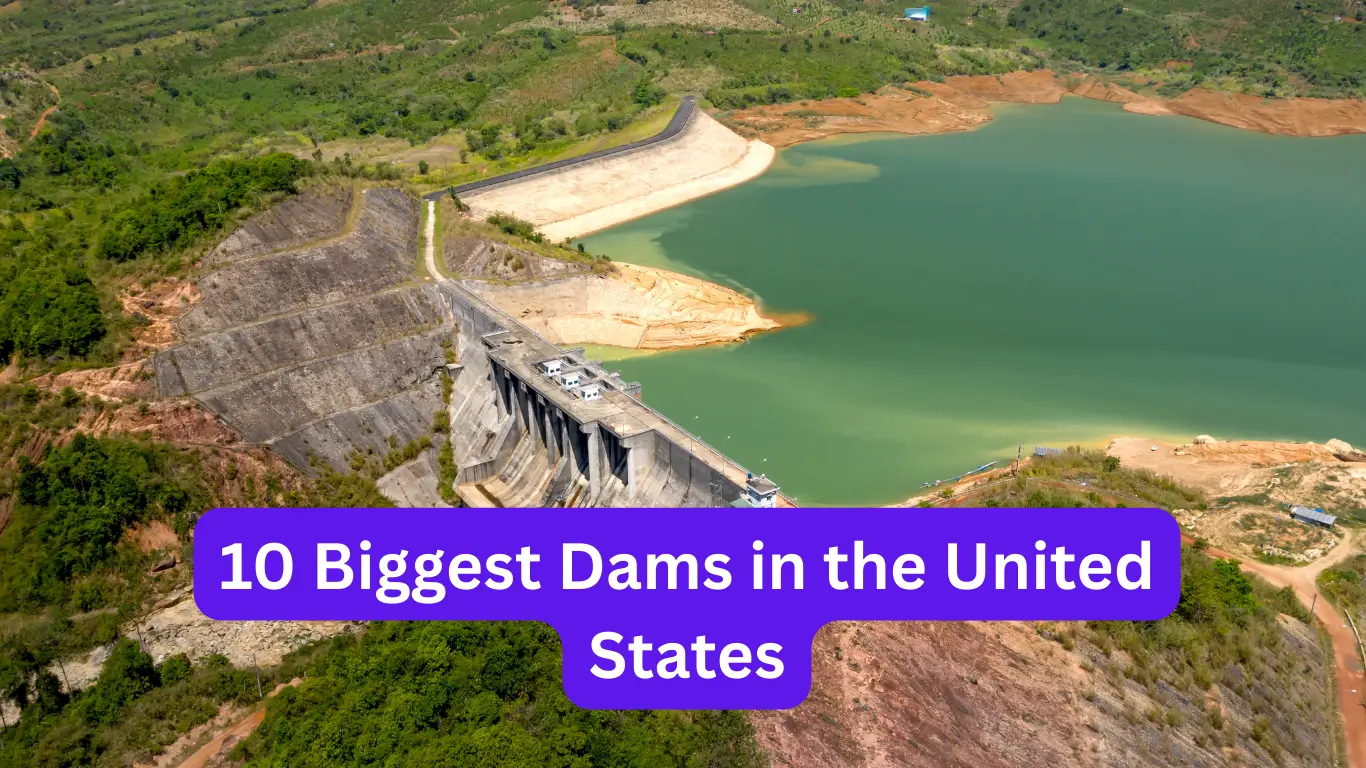The United States is home to some of the world’s most impressive dams, marvels of engineering that provide water storage, flood control, irrigation, and hydroelectric power. These massive structures have reshaped rivers, supported millions of people, and fueled economic growth. Among the thousands of dams across the country, some stand out for their sheer size, capacity, and historical importance. Here’s a detailed look at the ten biggest dams in the United States.

1. Hoover Dam, Nevada/Arizona
Hoover Dam is arguably the most famous dam in the U.S. Completed in 1936, it stands 726 feet tall and stretches 1,244 feet across the Colorado River. The dam created Lake Mead, the largest reservoir in the United States by volume, and its hydroelectric power plant provides electricity to millions in Nevada, Arizona, and California. Beyond its utility, Hoover Dam is an iconic symbol of American engineering.
2. Grand Coulee Dam, Washington
The Grand Coulee Dam, built between 1933 and 1942, is the largest concrete structure in the U.S. at 5,223 feet long and 550 feet tall. It forms Franklin D. Roosevelt Lake and is a major hydroelectric power source, supplying electricity to millions in the Pacific Northwest. The dam also supports irrigation in the Columbia Basin, one of the most productive agricultural regions in the country.
3. Oroville Dam, California
Oroville Dam is the tallest dam in the United States at 770 feet. Built on the Feather River, it forms Lake Oroville and plays a critical role in California’s water management. Besides hydroelectric power generation, the dam provides flood control and water storage, especially important during dry years or drought conditions.
4. Glen Canyon Dam, Arizona
Completed in 1966, Glen Canyon Dam is 710 feet high and forms Lake Powell on the Colorado River. The dam provides hydroelectric power, regulates water flow, and supports recreation like boating and fishing. Its strategic location helps manage water supply for several southwestern states, including Arizona and Utah.
5. Shasta Dam, California
Shasta Dam, finished in 1945 on the Sacramento River, is 602 feet tall and stretches 3,460 feet long. It creates Shasta Lake, a vital water reservoir for Northern California. The dam serves multiple purposes, including hydroelectric power, flood control, and irrigation. It is also a popular destination for recreational activities like boating and camping.
6. Fort Peck Dam, Montana
Fort Peck Dam, one of the largest earthfill dams in the world, was completed in 1940. It spans 21,026 feet in length and stands 250 feet high. The dam forms Fort Peck Lake, providing hydroelectric power, irrigation, and flood control for the Missouri River basin. Its size and scale make it an engineering marvel.
7. Flaming Gorge Dam, Utah/Wyoming
Flaming Gorge Dam, built on the Green River in 1964, is 502 feet tall. It creates Flaming Gorge Reservoir, which provides hydroelectric power, water storage, and recreational opportunities. The dam is vital for irrigation and water flow management in the surrounding arid regions.
8. Libby Dam, Montana
Libby Dam, constructed in 1975 on the Kootenai River, stands 422 feet high. It forms Lake Koocanusa and supplies hydroelectric power, flood control, and recreational opportunities. Libby Dam is part of the Columbia River Basin system and plays an essential role in water management across Montana and northern Idaho.
9. Pine Flat Dam, California
Pine Flat Dam on the Kings River was completed in 1954. Standing 429 feet tall, it provides flood control, hydroelectric power, and irrigation to Central California. The dam creates Pine Flat Reservoir, a key water source for agriculture and recreation in the region.
10. Hoover Bypass Dams, Nevada/Arizona
Supporting the main Hoover Dam are several auxiliary and bypass dams. These smaller structures help manage water flow, reduce flood risk, and enhance hydroelectric production. While less famous, they are crucial to the safety and efficiency of the Hoover Dam system.
Why These Dams Are Important
These enormous dams are more than concrete structures—they are lifelines. They generate renewable hydroelectric power, provide water for drinking and irrigation, control floods, and even support recreational tourism. Many of these dams, like Hoover and Grand Coulee, also played historical roles in shaping the nation’s economy and infrastructure during challenging times like the Great Depression.
The engineering behind these dams is awe-inspiring, from the massive earthwork of Fort Peck Dam to the towering concrete walls of Oroville Dam. Each dam required careful planning, innovative technology, and years of labor to complete.
Conclusion [Biggest Dams in the United States]
The United States’ largest dams showcase both engineering excellence and strategic resource management. From the towering Oroville Dam to the sprawling Fort Peck Dam, these structures continue to supply water, generate energy, and protect communities. As demand for renewable energy and water resources grows, these massive dams remain central to sustaining American life, economy, and development.
For more topics and detailed articles, visit our USA Top 10 website.
You can also Visit at Calculation Club


